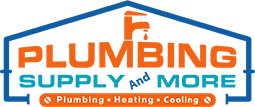Liquid Level Measuring Instruments
-
Vent Alarm Gauge, Whistle Alarm and Level Indicator, 2" Tank Opening x 1-1/4" Vent Pipe, 42" - 44" Tank DepthBrand: Scully Signal CompanySKU: 8712$42.37 46% off $78.50
-
Econ-O-Gauge, Level Indicator, 1-1/2" or 2" Tank Opening, 26" - 27" Tank DepthBrand: Scully Signal CompanySKU: 8710$28.64 48% off $55.23
-
Econ-O-Gauge, Level Indicator, 1-1/2" or 2" Tank Opening, 42" - 44" Tank DepthBrand: Scully Signal CompanySKU: 8709$27.76 48% off $53.06
-
-
2" Vent Alarm Gauge and Level Indicator with Whistle.Brand: Scully Signal CompanySKU: 105790$49.83 46% off $92.31
-
2" Vent Alarm Gauge with Whistle and Level Indicator.Brand: Scully Signal CompanySKU: 105789$49.83 46% off $92.31
-
-
3/8" x 10" Liquid Level Gauge Glass, Composite HandleBrand: Aalberts Integrated Piping SystemsSKU: 8748$98.48 40% off $164.55
-
-
Liquid Level Measuring Instruments are essential tools for accurately monitoring and controlling liquid levels in tanks, containers, and various industrial processes. These instruments use advanced technologies such as float switches, ultrasonic sensors, and pressure transmitters to provide precise measurements, ensuring efficient liquid storage and process control across a range of applications.
Key Benefits of Liquid Level Measuring Instruments:
- Accurate Monitoring: Ensures precise measurement of liquid levels, which is crucial for process control and avoiding overflows or shortages.
- Enhanced Efficiency: Helps optimize liquid storage and usage, reducing waste and improving operational efficiency.
- Safety: Prevents potential hazards by alerting operators to critical liquid levels, thereby avoiding spills and equipment damage.
- Process Control: Integrates with control systems to automate processes and maintain consistent liquid levels, enhancing overall system performance.
Frequently Asked Questions About Liquid Level Measuring Instruments
- What are liquid level measuring instruments, and how do they work in industrial and commercial applications?
- Liquid level measuring instruments are devices used to monitor and control the level of liquids in tanks and containers. They utilize various technologies, such as float switches, ultrasonic sensors, and pressure transmitters, to provide accurate readings of liquid levels. These instruments are critical in industrial and commercial settings for managing liquid storage, ensuring process efficiency, and preventing overflow or depletion.
- What are the common types of liquid level measuring instruments, and how do they differ in design and application?
- Common types of liquid level measuring instruments include:
- Float Switches: Simple devices that use a floating object to activate a switch when the liquid level reaches a certain point. Ideal for basic level monitoring.
- Capacitance Sensors: Measure changes in capacitance caused by the presence or absence of liquid, suitable for various liquid types and conditions.
- Ultrasonic Sensors: Use sound waves to detect the distance to the liquid surface, providing non-contact level measurement for a wide range of applications.
- Pressure Transmitters: Measure the pressure exerted by the liquid column, translating it into a level measurement. Effective for high-pressure and deep-tank applications.
- How can I select and install liquid level measuring instruments effectively, and what considerations are important for their proper use?
- Select liquid level measuring instruments based on:
- Liquid Type: Ensure compatibility with the type of liquid being measured, considering factors like viscosity and corrosiveness.
- Environmental Conditions: Choose instruments that can withstand the specific environmental conditions, such as temperature and pressure.
- Measurement Range: Match the instrument to the expected range of liquid levels for accurate monitoring.
- Calibration: Accurately calibrate the instrument for precise measurements.
- Secure Positioning: Ensure correct placement and alignment to avoid measurement errors.
- Integration: Integrate with control systems as needed for automated processes.
Explore our extensive range of liquid level measuring instruments to find the perfect solution for your needs. Whether you require float switches, ultrasonic sensors, or pressure transmitters, we offer high-quality options designed to meet various industrial and commercial applications. Browse our selection to ensure precise liquid level control and enhance your process efficiency.











